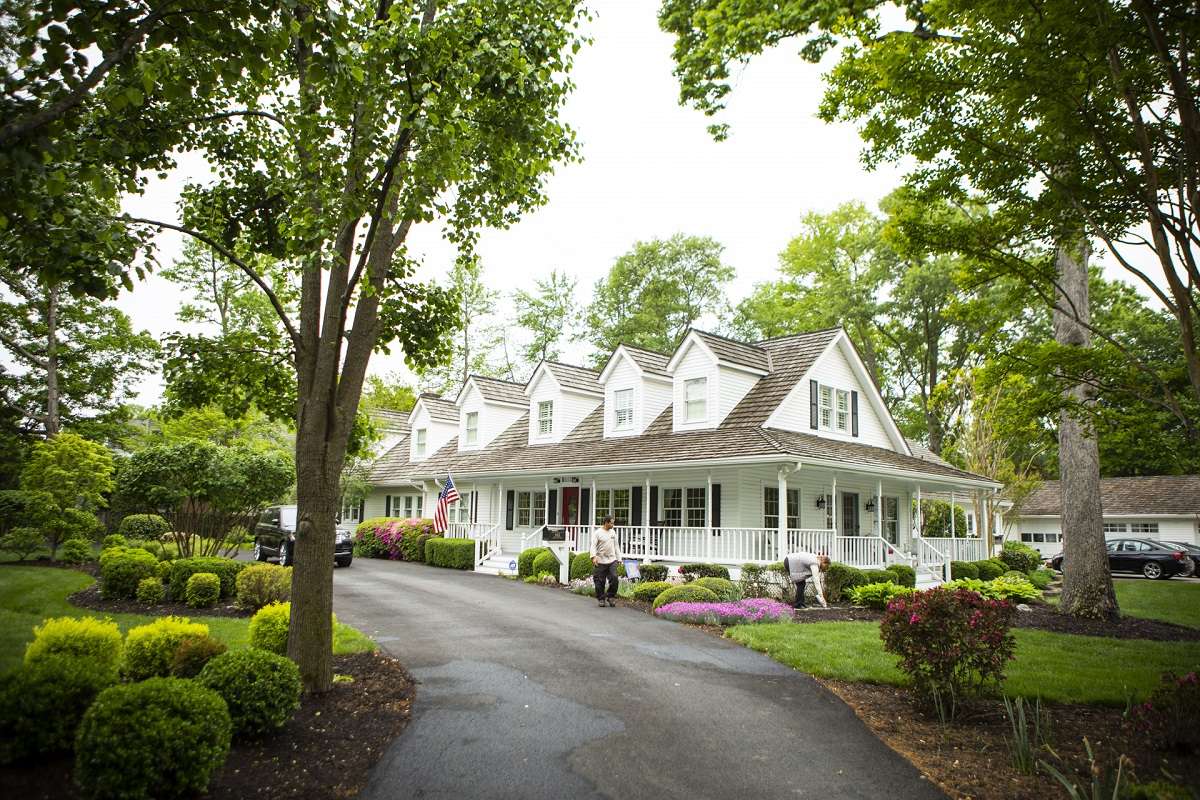

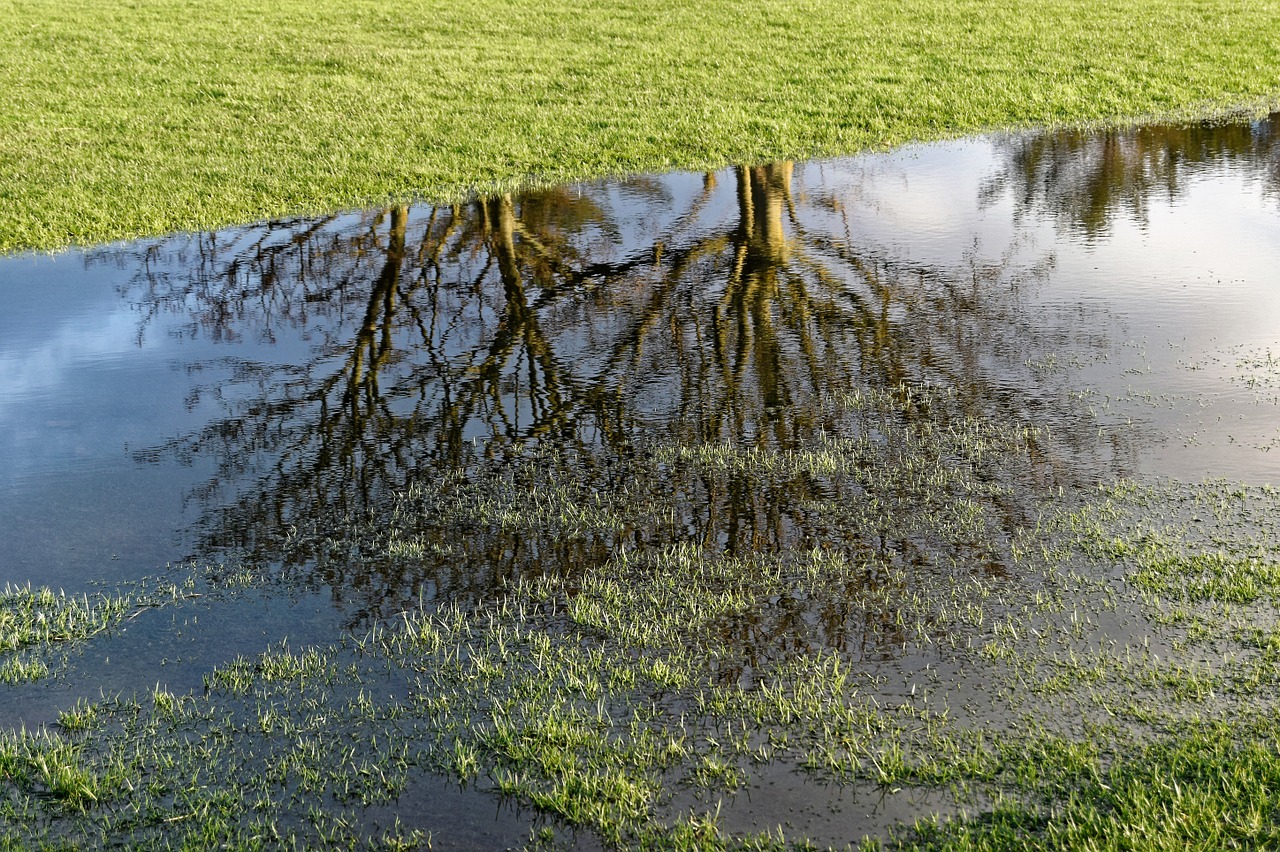
Is your yard becoming a swampy mess every time it rains? A flooded lawn can lead to turf or landscape damage, water in the basement, and make your yard entirely unusable.
It can be an incredibly frustrating problem to deal with.
Lawn flooding is a common problem that can occur for a number of different reasons. The key to implementing effective lawn flooding solutions boils down to figuring out what is causing your water woes in the first place.
In this article, we’ll cover how to address lawn flooding with effective yard drainage solutions.
As we said, the key to solving your lawn flooding problem is to figure out what is causing it in the first place. This will start with an evaluation by a yard drainage expert who can help you determine what is causing water to pool in your yard.
Of course, it’s not uncommon for lawn flooding problems to be caused by a combination of issues. Therefore, you might require multiple yard drainage solutions to keep the problem in check.
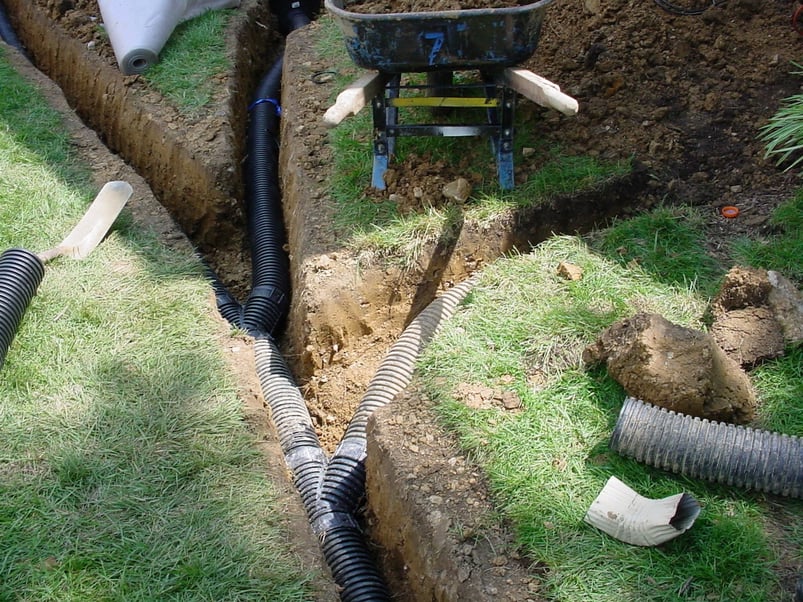
When discussing yard drainage, it’s important to keep in mind that a new project could lead to problems that you didn’t previously experience. That’s why yard drainage needs to be a key consideration when adding hardscaping.
If you add a patio but don’t consider how it might affect the way that water moves on your property, you could wind up with new problems that you didn’t have before. This is why it’s so important to work with a landscaper who understands yard drainage.
There are many potential solutions for lawn flooding. Let’s look at some of the more common options.
While serious lawn flooding will not be solved by lawn aeration, it is still important to mention that our clay soils here in Northern Virginia are naturally difficult to drain.
Aeration is the process of making small holes by pulling out soil plugs (“cores”) in order to allow more oxygen, water, and nutrients to penetrate down to the root zone. This provides a more favorable environment for the root systems to develop and grow.
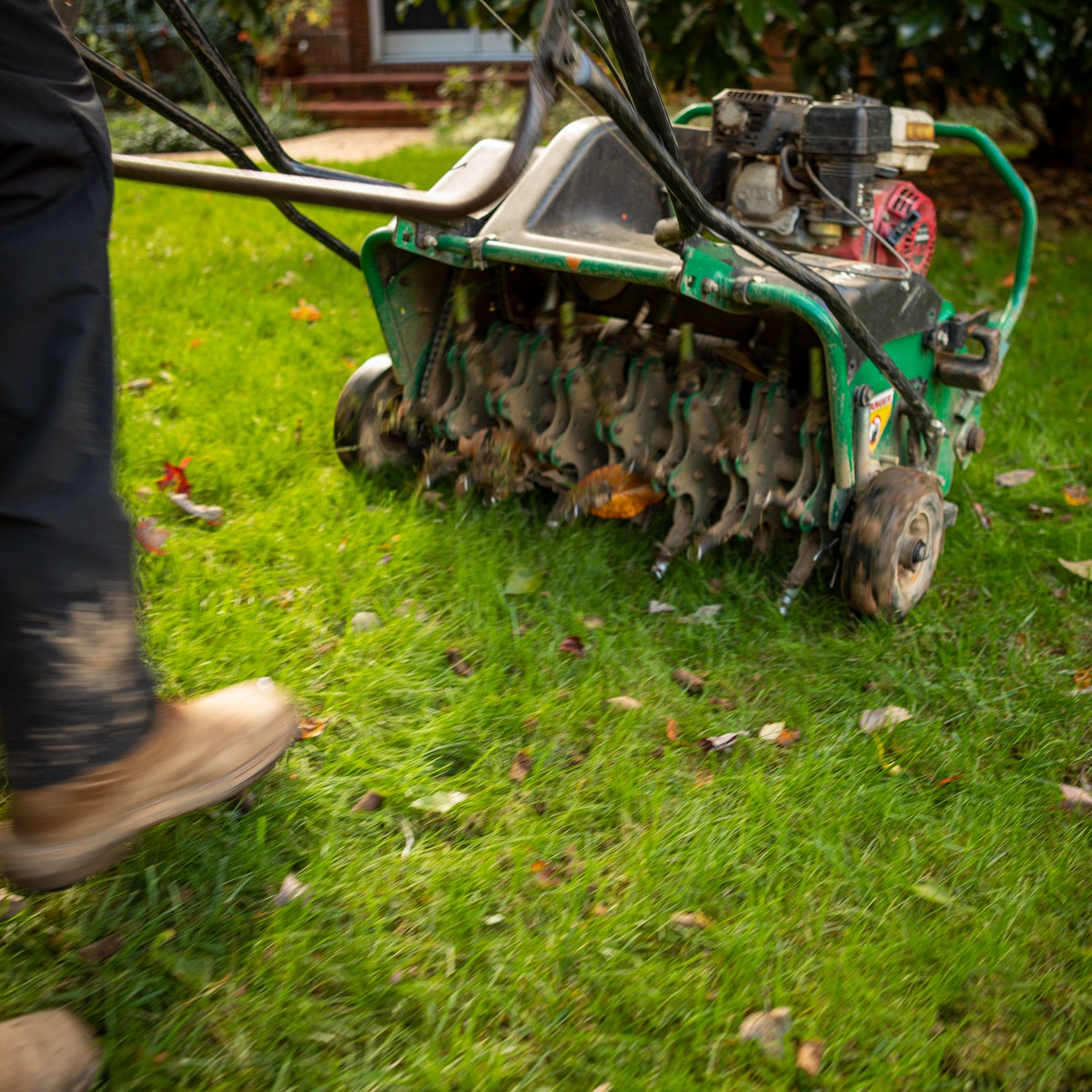
But lawn aeration will also help improve drainage by reducing soil compaction and improving the soil’s overall structure. This will help prevent light flooding issues during heavy rains.
Of course, as we mentioned, it’s not going to solve a more serious drainage issue. You’ll need one of these additional yard drainage solutions for that.
If you are experiencing trouble with water pooling on your property, grading is a common solution. Water will always follow the path of least resistance. That means that if your yard is sloped, the water is going to follow the path of that slope….and might end up where you don’t want it.
You definitely do not want water flowing toward your home, where it could lead to trouble with your foundation (and mean water in your basement). Of course, you also don’t want water washing out your patio or entertainment areas.
As we mentioned, sometimes adding hardscaping can change the flow of water (and the path of least resistance) so this is a critical consideration at the time of hardscape installation.
Grading involves digging and moving soil around to level things out and make adjustments to unfavorable slopes. It also commonly involves the use of retaining walls, which help with erosion, by holding the soil back.
Subsurface yard drainage solutions are also commonly part of the effort to fix lawn flooding. In fact, grading and subsurface drainage frequently work hand-in-hand.
Oftentimes, we install a subsurface drainage solution in the low area (where water is directed with a grading solution). This is a way to remove excess water in a quick and more controlled way. It will help prevent water from just pooling in that one location.
Here are some common examples of yard drainage solutions that we use.
For instance, a French Drain can be an effective yard drainage solution. It involves digging a simple trench that will help create a path of least resistance, taking water in the direction you WANT it to go.
A dry river bed (also sometimes referred to as a dry creek) is basically a landscape feature that mimics the look of a river or creek but uses stone and rock. Various rock types (including larger boulders) as well as plants might be used in the design. This is typically filled into a trenched-out area.
When there is excessive rain, the water will take this path and help better drain the water. Instead of pooling in your yard, water will be directed (and drained) down the path of the dry river bed.
Another solution is downspout piping and drainage. Sometimes a drainage problem is the result of your downspouts letting water out too close to your home or in an area where they create standing water. This is common during periods of heavy rain in which the downspouts might be sending water gushing into your yard.
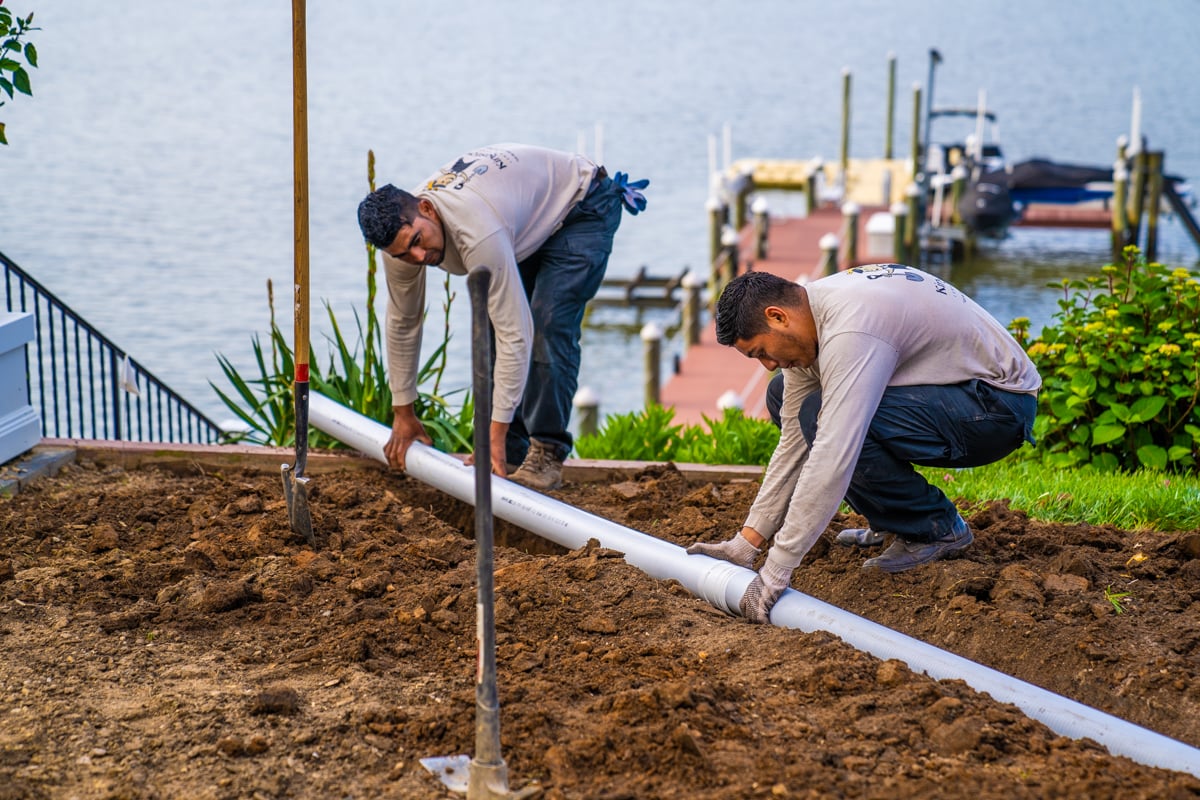
But we can extend those downspouts and direct water to a better location (such as a further away area in the yard that goes mostly unused).
Pop-up drain emitters can also be used to dispel the water that is captured in your drainage solution to let some of the water build-up go to a more desirable location. This can help with the effort to keep water away from structures or landscaping but also help your drainage solution to function better without becoming overwhelmed.
As we mentioned, many of these yard drainage methods work hand-in-hand with other solutions. For example, in the area where water is directed, you might also need a solution like a rain garden or a dry well.
A rain garden is designed to become this “overflow zone” where water can be naturally absorbed into the soil through a network of deep plant roots. We’ll install a mix of plants that are adapted to the different water depths they may encounter.
Another answer is a dry well, which is a dug-out well filled with stone so that the water directed to that area can better percolate into the ground. In other words, the goal is to avoid creating a new standing area of water.
At the end of the day, the right solution for you can be customized to your property’s needs. The key is to make sure that you’re working with a yard drainage expert.
More often than not, yard drainage solutions are multi-faceted and include more than one of the solutions mentioned above. It’s all going to depend on exactly what your site conditions are as well as what your expectations are.
Golf courses and athletic fields can literally have miles and miles of underground piping installed because even the slightest bit of standing water is unacceptable. So, it’s important that your personal expectations are factored into the solution.
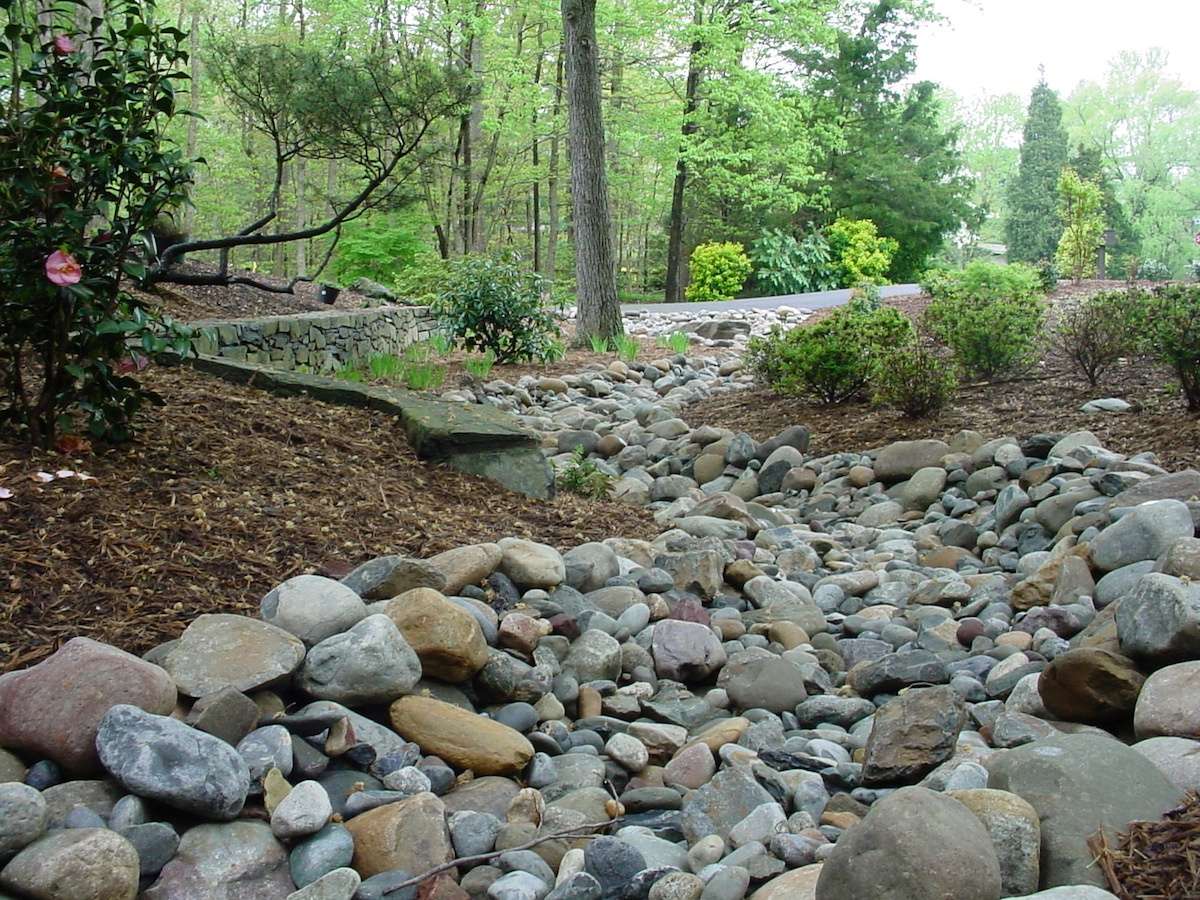
Since yard drainage problems can also be created at the time that hardscaping is done, it’s important that you’re working with a landscaper who will be proactive about identifying and fixing issues that could otherwise become serious problems.
At Kingstowne Lawn & Landscape, we understand that yard drainage is an issue that needs to be taken seriously. If not properly addressed, water can truly wreak havoc on your property.
By choosing to work with Kingstowne Lawn & Landscape, you can get on a path to yard drainage improvements that will provide you with peace of mind. By identifying problems early on and implementing effective solutions, we can help you to prevent worst-case scenarios. That means that water woes don’t have to stand in your way of having a property you can be proud of!
If you’d like to know more about yard drainage and whether there’s a solution that’s right for you, request a consultation, get your customized plan and relax as we give you the royal treatment.

Since 1997, Krisjan has led the Kingstowne team with one simple philosophy, treat every customer like the “only” customer. His passionate pursuit of impeccable customer service has resulted in 24 successful years and a thriving company with over 85 employees, helping thousands of homeowners in the Alexandria, Arlington, and Springfield, VA area get what they want - a worry-free property they can be proud of.


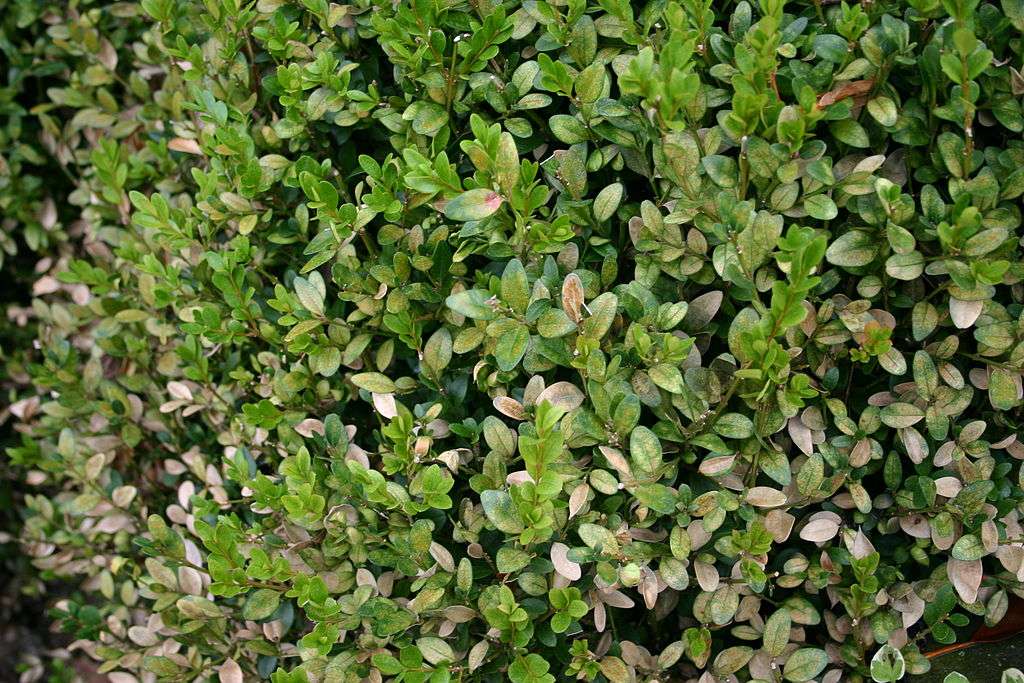

If You're Looking For a Sign, This is It.
Seriously, that lawn isn't getting any better on it's own. Mrs. Jones just called the HOA on you